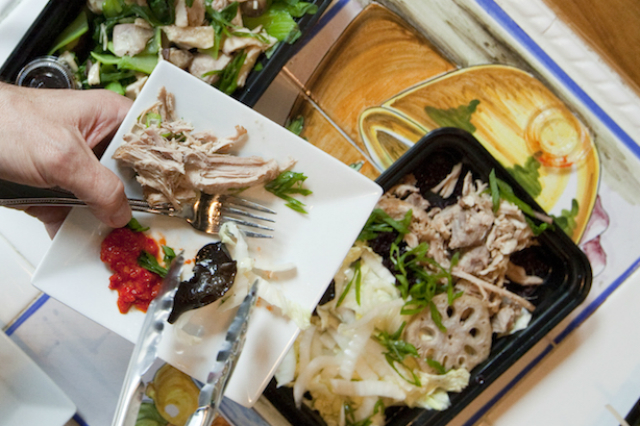
The company’s menu includes items that are antibiotic-, cage-, and hormone-free; locally sourced; and are made without sugar, gluten, or dairy. The meals are pre-made by chefs in kitchens under an hour away from delivery locations. They’re not frozen and just require you to heat it up in the oven, on the stove, or in the microwave. Delivering directly to people’s homes is limited at present, and those don’t live within the parameters can pick up the meals at locations such as gyms. So your food doesn’t sit out all day while you’re at work, the home deliveries are made between midnight and 7 a.m.
Power Supply isn’t the only company to offer chef-made meals delivered to your home. Munchery has a similar business model. Both are limited in scope, however. Power Supply is available in D.C., San Francisco, and L.A., and Munchery operates in L.A., San Francisco, New York, and Seattle.
On next Monday’s San Francisco dinner menu, there’s BBQ pork over apple and cabbage slaw; Mount Everest chicken curry with cauliflower, zucchini, and mango lime pickle; and beef bolognese over roasted spaghetti squash. Users can opt for which they want and customize meals by asking for recipes with ingredients they’re allergic to or just hate. The price per meal depends on how many calories you want in there: $10.50 for low-cal (250 to 400) and $13.50 for standard (450 to 600), as long as you’re on one of the recurring plans of three to five meals a week. Pickup at a local gym is free, but delivery costs $10 for Mondays and $15 for Thursdays.
The standard-size meal is pricier than the ingredient-delivery options such as Blue Apron, but you don’t have to cook yourself and it has to beat the shelf-stable diet food-delivery systems that have been around for years.


